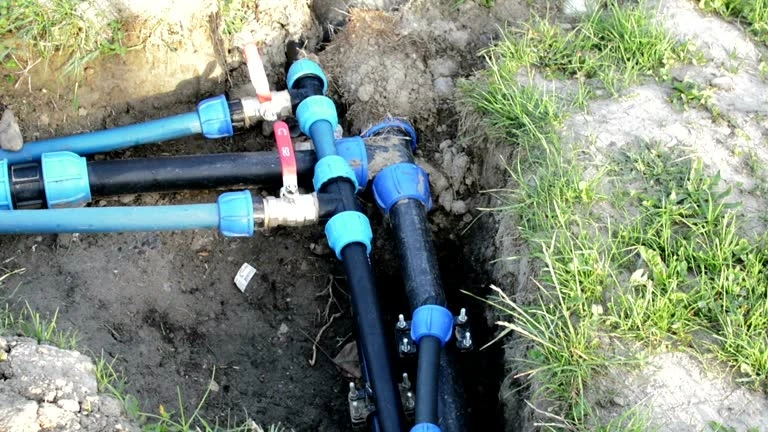The High-Density Polyethylene HDPE pipe market has been witnessing remarkable growth, projecting an opportunity of $16,800 million by 2023. This surge can be attributed to the increasing demand for durable, cost-effective, and environmentally friendly piping solutions in various industries. In this article, we will delve into the key factors driving this growth, the applications of HDPE pipes, market trends, and future prospects.

Understanding HDPE Pipe
HDPE pipes are made from high-density polyethylene, a thermoplastic known for its high strength-to-density ratio. This material is resistant to corrosion, chemicals, and UV radiation, making it an ideal choice for various applications, including water supply, drainage, sewage systems, and industrial uses.
Key Characteristics of HDPE Pipe
- Durability: HDPE pipes can last for over 50 years with minimal maintenance.
- Flexibility: They can withstand ground movement and pressure variations.
- Lightweight: Compared to traditional materials like steel or concrete, HDPE pipes are significantly lighter, making transportation and installation easier.
- Eco-friendly: HDPE is recyclable, contributing to reduced environmental impact.
- Cost-effective: The long lifespan and low maintenance requirements of HDPE pipes result in lower overall costs.
Applications of HDPE Pipe
The versatility of HDPE pipes allows them to be used in numerous sectors:
1. Water Supply
HDPE pipes are widely used in municipal water supply systems due to their resistance to corrosion and ability to maintain water quality. They help in reducing leakage rates, thereby conserving water.
2. Sewage and Drainage Systems
In sewage and drainage applications, HDPE pipes offer excellent flow characteristics and are less prone to blockages compared to traditional materials. Their flexibility also allows for easier installation in varied terrains.
3. Industrial Applications
Industries such as oil and gas, mining, and construction utilize HDPE pipes for transporting chemicals, slurries, and other materials. Their chemical resistance makes them suitable for these harsh environments.
4. Telecommunications
HDPE pipes are employed in the telecommunications sector for underground cabling. Their lightweight and flexible nature makes installation quicker and more efficient.
5. Agricultural Applications
In agriculture, HDPE pipes are used for irrigation systems and drainage solutions. They play a crucial role in water management and conservation in farming.
Market Drivers
Several factors are driving the growth of the HDPE pipe market:
1. Urbanization and HDPE pipe Infrastructure Development
Rapid urbanization and infrastructure development across emerging economies are leading to increased demand for reliable water supply and drainage systems. Governments are investing heavily in infrastructure projects, boosting the HDPE pipe market.
2. Environmental Regulations
Growing awareness of environmental issues and stringent regulations are prompting industries to adopt eco-friendly solutions. HDPE pipes, being recyclable and energy-efficient, align well with these regulations.
3. Technological Advancements
Innovation in manufacturing processes and technology is enhancing the quality and performance of HDPE pipes. New technologies, such as fusion welding and extrusion techniques, are making installations more efficient.
4. Cost Efficiency
The low lifecycle cost of HDPE pipes, attributed to their durability and minimal maintenance, makes them an attractive option for project developers and contractors.
Market Trends
The HDPE pipe market is evolving, influenced by various trends:
1. Growing Preference for HDPE pipe Over Traditional Materials
With advancements in technology and increased awareness of the benefits of HDPE pipes, there is a noticeable shift away from traditional materials like PVC and concrete.
2. Expansion of HDPE pipe Manufacturing Capacities
Major players in the HDPE pipe industry are expanding their manufacturing capacities to meet the rising demand. This includes investment in state-of-the-art production facilities.
3. Increasing Use of HDPE pipe Smart Technologies
The integration of smart technologies in HDPE piping systems is gaining traction. IoT-enabled sensors are being use for real-time monitoring and management of water flow, leading to more efficient water resource management.
4. Focus on Sustainability
Sustainability is becoming a crucial factor in decision-making processes. Companies are increasingly seeking sustainable solutions, prompting the growth of HDPE pipes as a green alternative.
Future Prospects
The HDPE pipe market is expecte to continue its upward trajectory, with several factors contributing to its growth:
- Continued Urbanization: As cities expand, the need for reliable water and sewage systems will drive demand for HDPE pipes.
- Investment in Renewable Energy: The renewable energy sector’s growth, particularly in wind and solar power, will create new opportunities for HDPE pipes in energy infrastructure.
- Global Initiatives for Water Conservation: Governments and organizations are prioritizing water conservation, which will boost the adoption of efficient piping solutions like HDPE.
Conclusion
The HDPE pipe market presents a significant opportunity, projected to reach $16,800 million by 2023. With its numerous advantages, including durability, flexibility, and eco-friendliness, HDPE is poise to become the material of choice across various applications. As urbanization continues and environmental concerns grow, the demand for HDPE pipes will likely increase, driving innovation and investment in the sector.
FAQs
1. What are HDPE pipe used for? HDPE pipe are use in water supply, sewage systems, industrial applications, telecommunications, and agricultural irrigation.
2. How long do HDPE pipe last? HDPE pipes can last over 50 years with proper installation and maintenance.
3. Are HDPE pipe environmentally friendly? Yes, HDPE pipes are recyclable and have a lower environmental impact compared to traditional piping materials.
4. What are the advantages of HDPE pipe over traditional materials? HDPE pipes are more durable, lighter, resistant to corrosion, and require less maintenance than traditional materials like steel or concrete.
5. How are HDPE pipe installe? HDPE pipes can be installe using various methods, including trenching, directional drilling, and fusion welding, depending on the application and terrain.

















![PE Pipe Market Size, Share, Trend [2024-2032] Forecast Report PE pipe](https://pipefittingblog.com/wp-content/uploads/2024/10/bd6eee761609250b2b9f3b286372274c.webp)
